On October 15, 2025, fifteen Democratic governors announced the formation of the Governors Public Health Alliance (GPHA), a coalition they describe as “nonpartisan” and committed to protecting public health through science-based policy.
Based on the membership and messaging, it’s clear this is both a political statement and a new framework for cross-state public health authority, emerging in direct defiance of federal leadership under the Trump administration.
Governor Bob Ferguson described the alliance as a way for states to “act faster and communicate better to ensure our communities stay healthy.” He emphasized that “diseases don’t stop at state or national borders — and preparedness shouldn’t either.”
Governor Gavin Newsom of California highlighted the political context behind the coalition: “As extremists try to weaponize the CDC and spread misinformation, we’re stepping up to coordinate across states, protect communities, and ensure decisions are driven by data, facts, and the health of the American people.”
Other governors echoed similar themes. Hawaii’s Governor Josh Green, a physician, said the alliance would give governors “new tools to coordinate and deliver clear, consistent, science-based guidance to the public at a time when we are facing unprecedented public health challenges.” Massachusetts Governor Maura Healey directly criticized federal leadership, stating that while “Donald Trump and RFK Jr. turn their backs on public health, governors are stepping up to make sure our residents have the health care they need and deserve.”
What the Alliance Does
The GPHA positions itself as a nonpartisan coordinating hub for governors and their public health teams. Its stated goals include:
- Health threat detection: sharing data on emerging illnesses across member states.
- Emergency preparedness: pooling resources, expertise, and best practices to respond to crises.
- Policy alignment: coordinating guidance on vaccines, public health measures, and regulations.
- Global engagement: liaising with international health organizations — a role traditionally reserved for the federal government.
The coalition also links existing regional partnerships, such as the West Coast Health Alliance and the Northeast Public Health Collaborative, creating a national platform for coordinated action among member states.
The alliance is supported by GovAct, a nonprofit that incubates and advises governors’ initiatives, and guided by a bipartisan advisory board including former Republican governors Arne Carlson, Marc Racicot, and Bill Weld, alongside Democrats Jim Doyle, Deval Patrick, and Kathleen Sebelius. Public health experts like Dr. Mandy Cohen, former CDC Director, also advise the group.
While the alliance emphasizes science over politics, it is composed entirely of Democratic governors. Critics have raised concerns that this could fragment national public health guidance, creating two parallel systems: one in GPHA states and another following federal guidance or independent state policies elsewhere.
The GPHA’s plan to engage directly with international health organizations (like the WHO or Gavi) is significant.
That’s something only the federal government typically does.
If this group starts signing MOUs or aligning with WHO guidance independently, they’ll effectively be outsourcing state health policy to international bodies.
The GPHA also mirrors COVID-era infrastructure, including cross-state coordination on vaccine access, emergency orders, and public messaging. By institutionalizing these mechanisms, the alliance establishes a framework that could be activated during future health crises, raising questions about how residents nationwide will experience public health guidance.
Because the GPHA is a nonprofit-backed coalition, it’s not subject to legislative oversight. They can align on “standing orders” (like vaccine access) without ever passing new laws.
That’s the same kind of executive action model we saw with emergency powers during COVID — but now, they can coordinate across 15 states at once.
The Setup for “COVID 2.0”
If you were planning for the next global health event — or even a “climate-related health emergency” — this is exactly how you’d do it:
- Build a coalition of governors loyal to your political ideology.
- Call it “nonpartisan” but fill it with partisan actors.
- Use “science” as the unifying moral language.
- Create your own data and communication pipelines.
- Establish standing executive powers under “emergency preparedness.”
That’s the framework for the next public health lockdown, just waiting for the right trigger; whether it’s a new virus, a climate event, or another “public health emergency” declaration.
The Bigger Picture
The creation of the GPHA reflects a broader trend in which state-level leaders are building parallel structures to federal authority under the banner of science. It’s a demonstration of political and operational independence, but it also raises concerns about fragmentation, consistency, and transparency in public health policy.
As Governor Ferguson noted, “Diseases don’t stop at state or national borders — and preparedness shouldn’t either.” That preparedness now exists in a framework controlled by governors aligned politically and ideologically, rather than one unified federal system.
Stay Informed and Engaged
If you believe citizens deserve to know the truth about what’s happening in our cities and states — especially when local leaders defy federal authority — please consider supporting our work. Conservative Ladies of America is a 501(c)(4) organization committed to protecting families, faith, and freedom. Help us continue educating and equipping Americans to push back — upgrade to a paid subscription or make a donation today.


